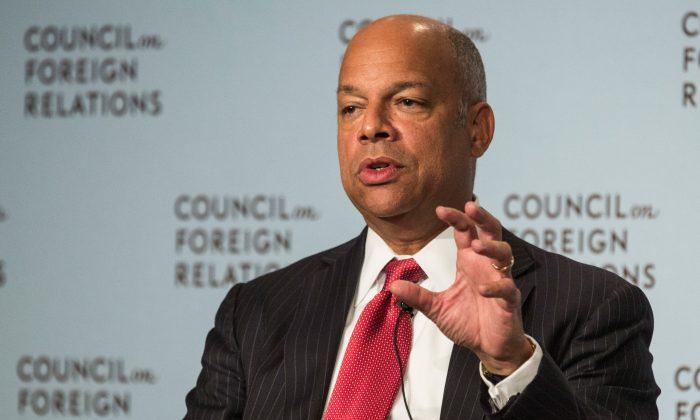NEW YORK—About 20 electronic cigarette users, some wearing “nonsmoker” badges, defiantly puffed on their e-cigarettes during a health committee hearing on the devices at City Hall Wednesday. The committee is considering a bill to extend the indoor smoking ban to these battery-powered, smokeless cigarettes.
E-cigarette users voiced their strong opposition to outlawing indoor use of the devices, arguing indoor smoking bans were enacted to protect against the dangers of second-hand smoke, while electronic devices emit only vapor.
Health Commissioner Dr. Thomas Farley said the cultural shift away from smoking as socially acceptable has been a key effect of the smoke-free ban. He said the indoor smoking ban has been the single most effective policy at cutting smoking in the city. Now indoor e-cigarette use is complicating enforcement of that ban, Farley said.
He said allowing use of e-cigarettes in restaurants and other public places is challenging enforcement of that law because now waiters and business owners have to make sure customers are using an e-cigarette and not lighting up a combustible cigarette.
Further, allowing e-cigarettes to become socially acceptable by allowing their use in restaurants and public places could affect social acceptance of conventional cigarettes, “undermining the enormous progress of tobacco control over the last decades,” Farley said.
Farley said that part of the smoke-free ban’s effect in helping people quit—a forced nicotine fast while indoors—would be undermined if e-cigarettes can be used indoors. Those trying to quit who can use e-cigarettes indoors will be able to keep the level of nicotine in their blood elevated, tying them over to when they can get outside to smoke.
Post-doctoral researcher Lucy Popova at University of California–San Francisco testified that research done at the university found e-cigarettes inhibited smokers from breaking their addiction to nicotine. When two groups of smokers tried to quit, those using e-cigarettes met with less success than those not using them.
Dr. Farley acknowledged health officials need more research on the long-term health effects of e-cigarettes and the vapors they emit, so discouraging e-cigarette use is not the focus the law. His main concern is upholding the enforcement and effect of the smoke-free ban.
But opponents argued enforcement is not a problem, as most e-cigarettes do not look similar to conventional cigarettes. When wait staff walk over to a patron with an e-cigarette to double check, patrons are pressing the tip to their cheek to show it is not burning and is an e-cigarette, said Robert Bookman, speaking on behalf of the NYC Hospitality Alliance.
“What we are afraid of is legislation being passed based on speculation and guesswork,” said David Schwartz testifying on behalf of e-cigarettes maker Logic.
The legislation has been fast-tracked for a vote Dec. 19. Critical supporters of the legislation, Mayor Michael Bloomberg, Speaker Christine Quinn, and bill sponsor Council member Jim Gennaro are on their way out of office Dec 31.
Proposed regulation of e-cigarettes by the FDA is currently under review by the White House office of Management and Budget. The proposed FDA regulations may be released by the end of the year.
Regardless, several states and cities including New Jersey, Utah, North Dakota, Boston, as well as long list of smaller cities and counties have already passed laws to restrict e-cigarette use in public places. Gennaro said that already 17 million–20 million Americans are living under such laws—with little opposition.
“I think the city is behind the times a little bit, and it’s time we caught up,” said Gennaro.



